Unstructured play on the playground gives children the opportunity to explore, discover, experience, learn, and develop the imagination. Music further stimulates a child’s curiosity, encouraging them to discover new sounds, new rhythms, wonder how a sound is made, and so much more.
Musical instruments are for everyone, everywhere. This is a key concept that is often missed when determining what to offer on a playground. Music is universal; it doesn’t differentiate between language or age. Musical instruments work in everyday circumstances; they can go anywhere, whether it is a park, playground, sensory garden, or street corner.

The Duo is accessible from both sides and the curvaceous design makes it easier for individuals with limited range of movement to reach the notes (photo courtesy of Percussion Play).
“It’s a movement that is spreading around the world. We are finding musical instruments in random places, such as street corners. They are extending the playground area outside the fenced-in park.”
-Robin Ashfield, Sales & Marketing Director for Percussion Play
Music is for All Abilities
Playgrounds are typically designed for active kids who are jumping, running, and climbing. This can make it difficult for kids of other abilities to join in the fun. Musical instruments are an alternative solution. They are a leveler between different abilities. Children with a disability can participate with those who are able-bodied. Music therapy has proven to be effective in helping children with autism and Asperger’s syndrome and those who have diminished social skills to participate in play, to be more engaged. Music is success-oriented; people of all ability levels can participate.
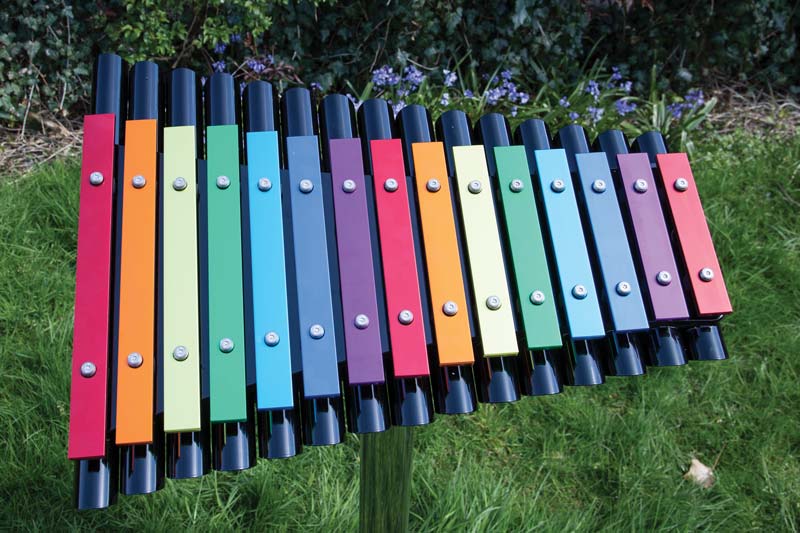
The Cavatina is a color-coded instrument that is tuned to the C-Major diatonic scale (photo courtesy of Percussion Play).
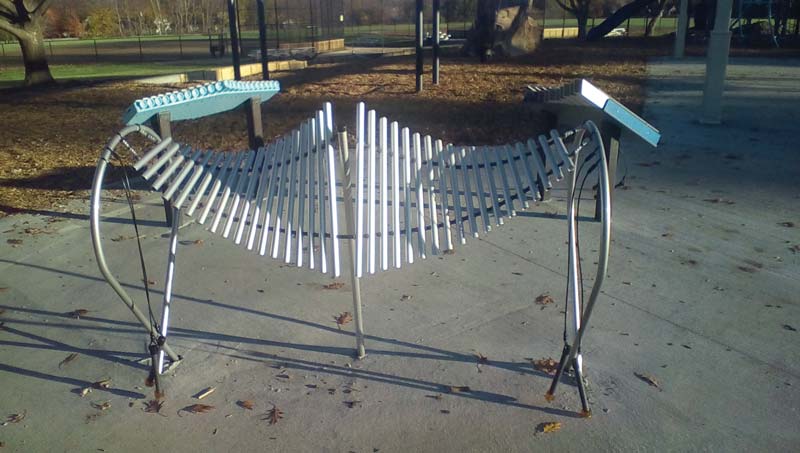
Chimes repeated on two sides makes this a great instrument for two to play together. Miller J. Fields Park, Lee's Summit, MO (photo courtesy of ABCreative).
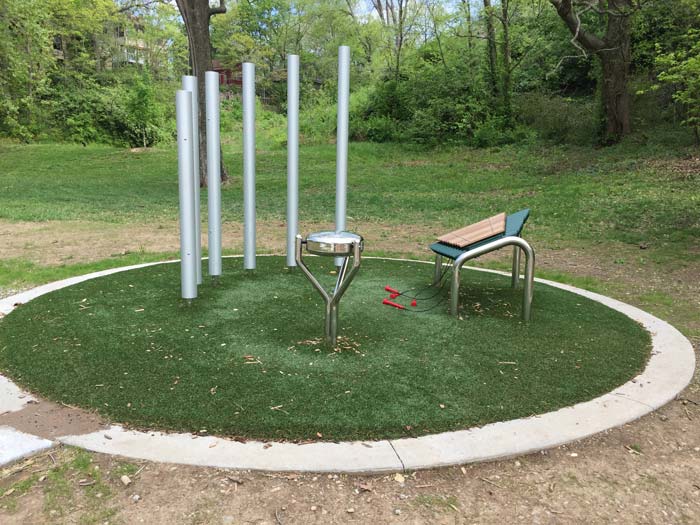
An ensemble of different instruments offers a well-rounded range of tones and the opportunity for anyone to take the stage. Karnes Playground, Roanoke Park in Kansas City, MO. (photo courtesy of ABCreative)
Types of Outdoor Musical Instruments
When it comes to choosing outdoor musical instruments for a play space, it is important to know the difference between diatonic and pentatonic instruments. A diatonic scale is built on the intervals made by natural notes, neither flat nor sharp. It is most familiar as the major scale. Some companies color code the notes on the instrument and produce a music book with the score colored in. Players don’t need to be accomplished musicians or be able to read music; they can still play by following the colors in the book.
Pentatonic scales do not include all the notes found in a diatonic scale. With pentatonic instruments, the melody played always sounds good, no matter what order the notes are played in. No musical ability, skill, or training is needed. Children who don’t know how to read music or who have never played before can play pentatonic instruments and make beautiful music.
Using outdoor musical instruments with the pentatonic scale enhances group play. Several children can play different instruments and generate a beautiful melody. There is no need to practice or rehearse; songs can be made up impromptu. Playing together helps develop cooperation with others and leads to a sense of accomplishment.
Children learn that each type of instrument makes its own sound. They learn how to replicate sounds and how they can affect the speed, tone, and volume as well as how different materials make different sounds.
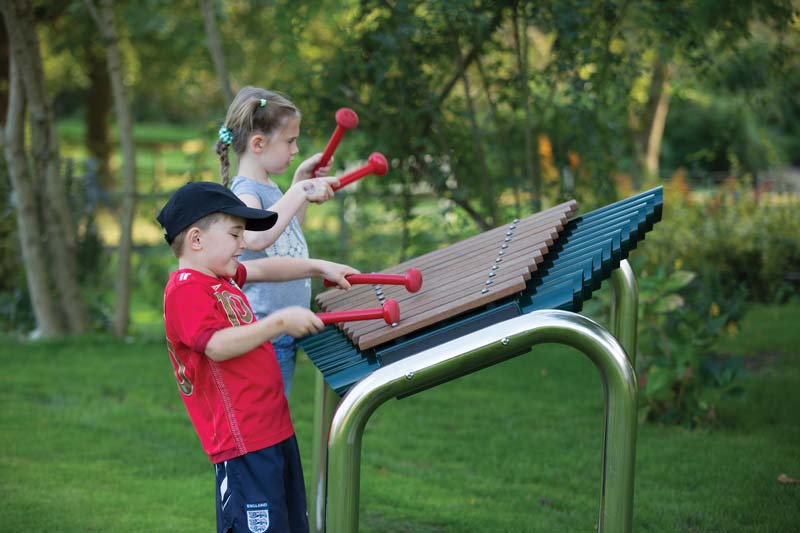
The height, angle, and space underneath the Grand Marimba makes it easy for children in wheelchairs to play (photo courtesy of Percussion Play).
Encourages Creative Expression
There is no right or wrong way to play when it comes to musical instruments on the playground. With no rules, the focus is truly on creativity and self-expression. The playground offers a safe environment for children to experiment, improvise, and express emotions. It gives them the opportunity to discover sounds and rhythms on their own and experiment by creating their own tunes. For some, it might be the first time they have played an instrument. Outdoor instruments give them the chance to experiment in a freer manner and explore their artistic voice and imagination.
A Place for Social Gatherings
Installing musical instruments in a public space such as a park playground serves as a social and recreational focal point for the surrounding neighborhoods. They fill a social need by helping to build greater bonds between different age groups and offering intergenerational play. People of all ages can enjoy playing the instruments, allowing parents and caregivers to play alongside with children. It is something they can do together; age doesn’t matter.
These instruments are also attractive to teens. As children get older, they become harder to entertain. Musical instruments are often seen as “cool” and challenging by this age group. Older children can get together and jam.
Classroom Benefits
Music captivates a child’s attention, stimulates the imagination, and uses many parts of the brain. Research suggests that informal musical activities influence auditory discrimination and attention maturation of preschool and school-aged children. Whether listening to it for pure pleasure or to gain new language or social skills, music enriches the lives of children of any age, preparing children as they start school and progress, make new friends, and face new challenges.
Musical instruments enhance learning and growth, helping children develop emotional, social, cognitive, and even physical abilities, all of which will help them be more successful in the classroom. Musical instruments can be used to teach math concepts by counting beats. Often music is used as a mnemonic tool to help them remember things like the alphabet and days of the week.
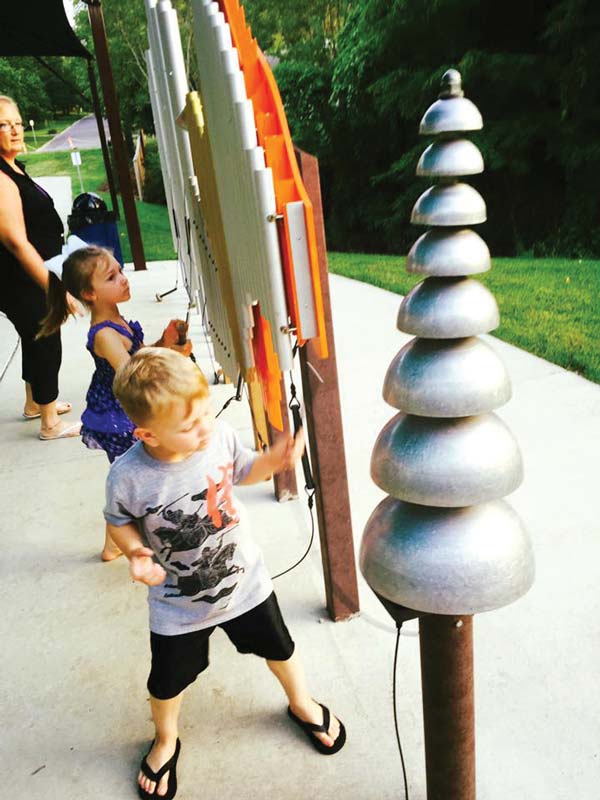
The Pagoda Bell is a vertical array of bells that can complement other musical instruments. Valley Park, Grandview, MO (photo courtesy of ABCreative).
Music supports and encourages movement. Using musical instruments, children develop motor skills such as visual-motor integration and crossing the midline. Children benefit from auditory and tactile stimulation through the music’s vibrations. Outdoor playground instruments add a physical element to learning about music. Children can stand still while they play or bounce from note to note and dance to the music. This movement helps improve coordination and balance and develops a greater awareness of their bodies.
Musical instruments help children develop social skills such as taking turns, following directions in a group, making eye contact and engaging in cooperative play.
Add Outdoor Musical Instruments to Your Next Playground Design
Outdoor musical instruments, whether diatonic or pentatonic, can be installed individually or in groups, no safety surfacing is needed, and some can be wall-mounted, too.


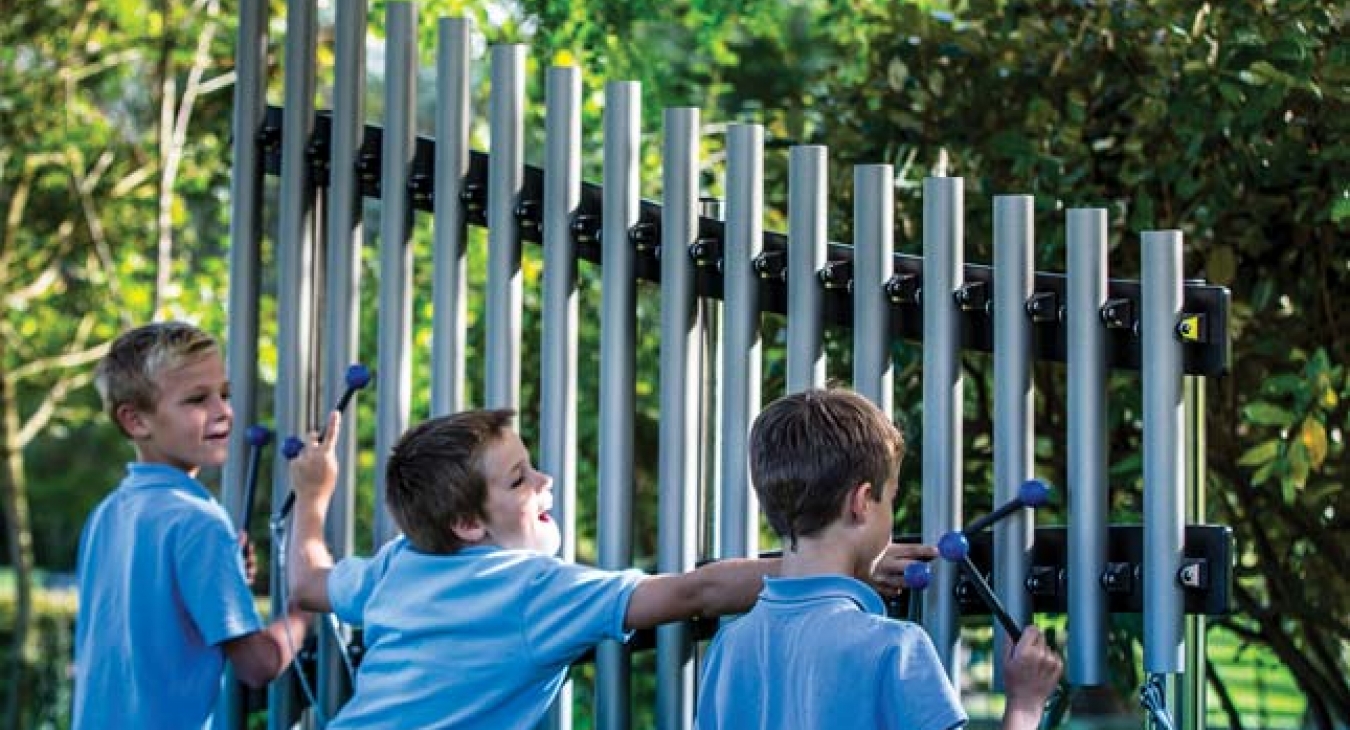

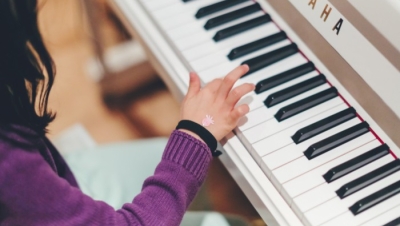



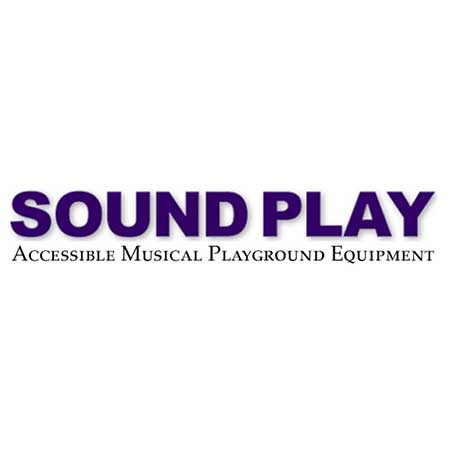


pricing
I'd like to get pricing on the pagoda bell, vertical chimes and chimes repeated on two sides. I am working on a packet park for a rural library
Add new comment